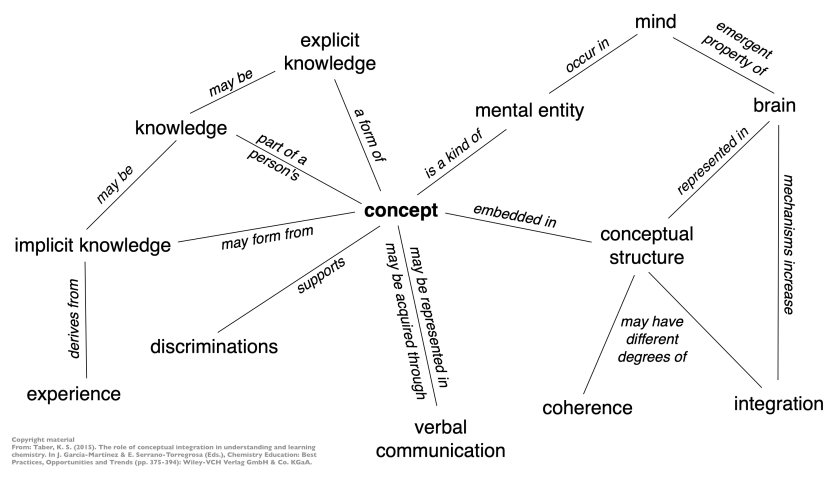A concept map is a visual representation of facts and ideas, and of the relationships among them

Creating a concept map, on its own, generates a number of cognitive benefits.
-
It is a visual tool for organising and representing knowledge.
-
It is a technique used to help individuals better understand and communicate complex ideas or relationships between different concepts.
-
Concept maps are diagrams that represents ideas, concepts and relationships using nodes(usually represented boxes or circles ) and connecting lines.
-
Each node represents a concept or idea, and connecting lines indicates the relationship between the nodes.
-
These relationships can include things like “is a type of”, “causes”, “influences” or “part of”
-
It consist of:
- Main topics
- Lines
- Nodes
- Linking words
-
The main difference from mind map is that, mind maps don’t have linking words.
-
Examples of linking words:
- Includes
- Promotes
- Measures
- Is opposite to
- Drives
- Combines with
- Increases
- Decreases
- Is related to
- Begins with
- Represents
- Varies with
-
If you ever get struck when building your map, you could try looking at a list of linking words to spark new ideas.
-
Concept map can generate
- new insights,
- Identifying loopholes or gaps
- Inconsistencies
- a shareable diagram
- new insights,
-
It is a reading method or an active learning method.
-
It is a “living” document
- All new learning is connected to existing knowledge (Constructivism)
-
A tool specifically suited for ADD - ADHD students
-
It need not be symmetrical.
Construction of a concept map:
- List or highlight the major concepts from notes or text
- Identify in the list the most general concepts(grouping)
- Arrange with the most general concepts at the top:
- Label connecting lines to explain the relationships if needed
- Arrowheads can show direction, cause-and-effect, etc…
- Try to branch out at each level of the hierarchy with more than one link
- Identify and draw cross-links between related concepts.
- This is a powerful step in developing integrative thinking
- Requires “looking around”
- Active Learning - you looking for something in a lecture
List - Group - Compare
- List important terms
- Group by major topic
- Compare by drawing cross-links